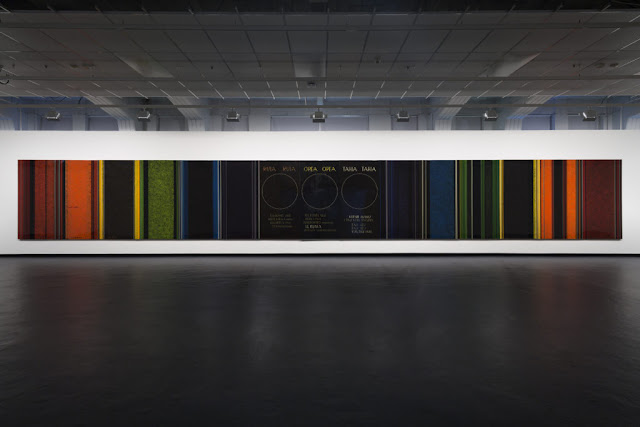Ree Morton (August 3, 1936 – April 30, 1977) was an American visual artist who was closely associated with the postminimalist and feminist art movements of the 1970s.
Ree Morton was born on August 3, 1936 in Ossining, New York. A mother of three and the former wife of a navy officer, Morton lived a relatively nomadic life and began her artistic practice as a hobby through drawing. She decided to become a full-time artist in the late 1960s, receiving a BFA from the University of Rhode Island in 1968 and an MFA from the Tyler School of Art at Temple University in 1970.Morton worked in a variety of mediums including sculpture, drawing and installation.Morton deployed "confrontational innocence," as described by art historian Lucy Lippard, and humor in her sculptures that referenced everyday decorative forms such as curtains, ruffles and swags.Morton herself described her work as "light and ironic on serious subjects without frivolity."Her piece Bake Sale (1974), for instance, was spurred on by a male faculty member at the Philadelphia College of Art who suggested that women on the faculty should stick to bake sales. Formally, Bake Sale (which features a comically low table covered with cakes and pastries against a wall of Celastic bows) typifies the playful interrelationships of objects Morton sought to create in her work. Curator Marcia Tucker describes Morton's work as "unusual in its totality; it incorporates painting, sculpture, real and crafted objects, natural and artificial materials. The work is intelligent without being intellectual, narrative without being literary and ironic without being whimsical. Its multiplicity, contradictory and slightly perverse nature, its response to natural forms and its sources in primitive human phenomena result in a unique sculptural mode." Morton's art frequently combined an interest in poetry, language, and semiotics.Wikipedia
Ree Morton was born on August 3, 1936 in Ossining, New York. A mother of three and the former wife of a navy officer, Morton lived a relatively nomadic life and began her artistic practice as a hobby through drawing. She decided to become a full-time artist in the late 1960s, receiving a BFA from the University of Rhode Island in 1968 and an MFA from the Tyler School of Art at Temple University in 1970.Morton worked in a variety of mediums including sculpture, drawing and installation.Morton deployed "confrontational innocence," as described by art historian Lucy Lippard, and humor in her sculptures that referenced everyday decorative forms such as curtains, ruffles and swags.Morton herself described her work as "light and ironic on serious subjects without frivolity."Her piece Bake Sale (1974), for instance, was spurred on by a male faculty member at the Philadelphia College of Art who suggested that women on the faculty should stick to bake sales. Formally, Bake Sale (which features a comically low table covered with cakes and pastries against a wall of Celastic bows) typifies the playful interrelationships of objects Morton sought to create in her work. Curator Marcia Tucker describes Morton's work as "unusual in its totality; it incorporates painting, sculpture, real and crafted objects, natural and artificial materials. The work is intelligent without being intellectual, narrative without being literary and ironic without being whimsical. Its multiplicity, contradictory and slightly perverse nature, its response to natural forms and its sources in primitive human phenomena result in a unique sculptural mode." Morton's art frequently combined an interest in poetry, language, and semiotics.Wikipedia






























































